
A decline in total aggregate counts of HAIs (ie, CAUTI, CLABSI, C difficile, MRSA bacteremia, and pneumonia) at both ICUs was observed when compared to a historical count 21 months prior to AP activation for the Louisiana site (71% reduction; 24 HAIs to 7 HAIs) (Fig A) and 12 months prior at the Kentucky site (70% reduction; 10 HAIs to 3 HAIs) (Fig B)
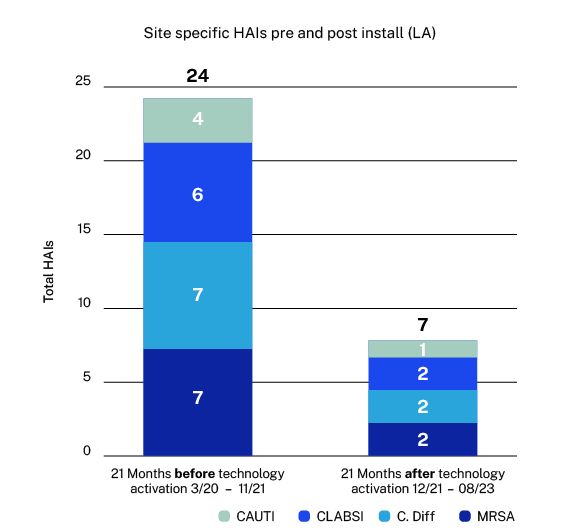
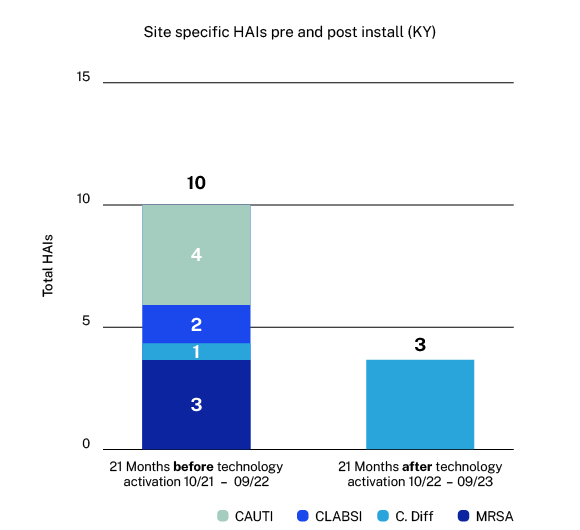
Fig. Aggregate counts of surveilled HAIs comparing matched time periods before and after ActivePure technology activation for Louisiana (A) and Kentucky (B). CAUTI, catheter-associated urinary tract infection; C difficile, Clostridioides difficile; CLABSI, central line-associated bloodstream infection; MRSA, methicillin-resistant Staphylococcus aureus.
Mean fungal CFUs were reduced by 98% at Louisiana site and 99% at the Kentucky site from baseline to postactivation
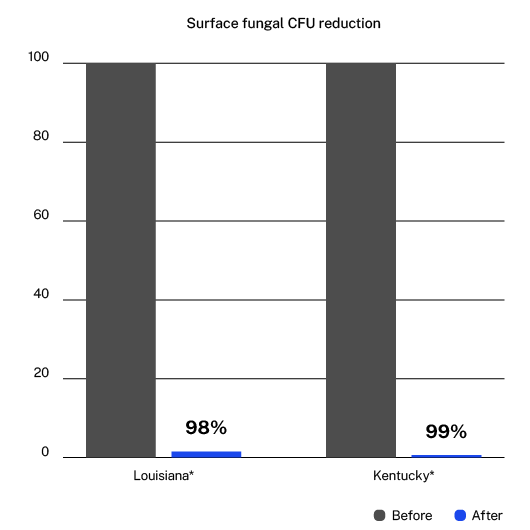
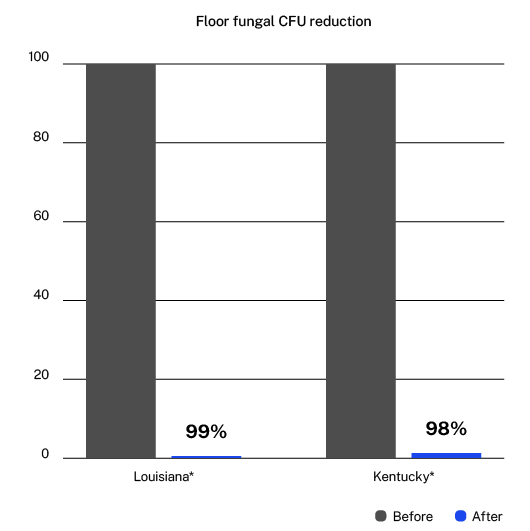
Mean fungal CFUs were reduced by 99% at Louisiana site and 98% at the Kentucky site from baseline to postactivation
Mean aerobic bacterial and fungal CFUs were reduced by 72% (27.3 CFUs to 7.7 CFUs) and 89% (10.6 CFUs to 1.18 CFUs), respectively, from baseline to postactivation at Louisiana site. Mean aerobic bacterial CFUs increased by 6% (9.29 CFUs to 9.86 CFUs)1 and mean fungal CFUs were reduced by 27% (1.57 CFUs to 1.14 CFUs) at the Kentucky site.
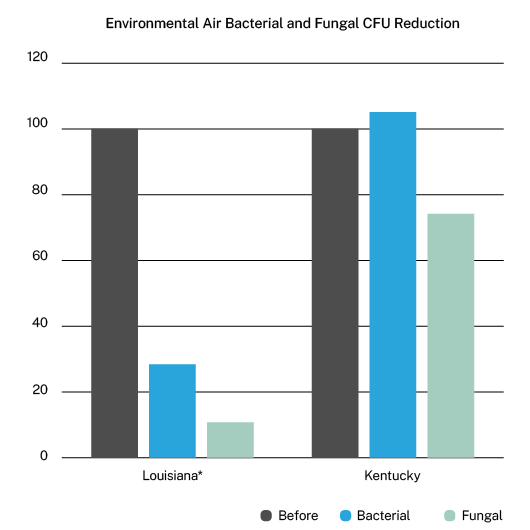
* Illustrated findings were statistically significant.
1 Mean aerobic bacterial air CFUs at the Kentucky site were the only study result to show an increase compared to baseline, which is likely due to the turbulent nature of airflow and ensuing variability of airborne microbe dispersal.

By signing up, you agree to our Privacy Policy & Cookie Statement and to receive marketing and account-related emails from Dopp Health Solutions. You can unsubscribe at any time.
Disclaimer: The information on this website is for educational purposes only and should not be considered medical advice. The information presented here is intended to help you make informed decisions about your health and is not intended to replace the advice of your doctor.